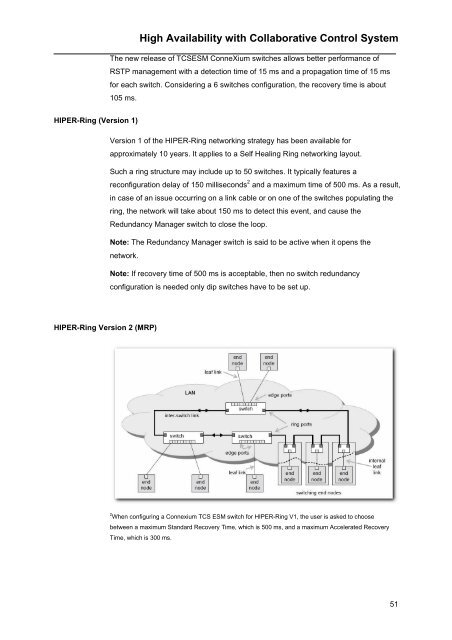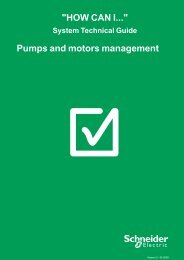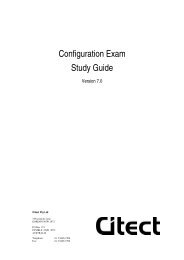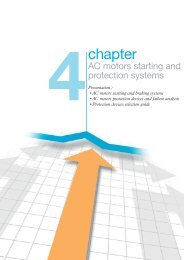High Availability Theoretical Basics - Schneider Electric
High Availability Theoretical Basics - Schneider Electric
High Availability Theoretical Basics - Schneider Electric
You also want an ePaper? Increase the reach of your titles
YUMPU automatically turns print PDFs into web optimized ePapers that Google loves.
<strong>High</strong> <strong>Availability</strong> with Collaborative Control System<br />
The new release of TCSESM ConneXium switches allows better performance of<br />
RSTP management with a detection time of 15 ms and a propagation time of 15 ms<br />
for each switch. Considering a 6 switches configuration, the recovery time is about<br />
105 ms.<br />
HIPER-Ring (Version 1)<br />
Version 1 of the HIPER-Ring networking strategy has been available for<br />
approximately 10 years. It applies to a Self Healing Ring networking layout.<br />
Such a ring structure may include up to 50 switches. It typically features a<br />
reconfiguration delay of 150 milliseconds 2 and a maximum time of 500 ms. As a result,<br />
in case of an issue occurring on a link cable or on one of the switches populating the<br />
ring, the network will take about 150 ms to detect this event, and cause the<br />
Redundancy Manager switch to close the loop.<br />
Note: The Redundancy Manager switch is said to be active when it opens the<br />
network.<br />
HIPER-Ring Version 2 (MRP)<br />
Note: If recovery time of 500 ms is acceptable, then no switch redundancy<br />
configuration is needed only dip switches have to be set up.<br />
2 When configuring a Connexium TCS ESM switch for HIPER-Ring V1, the user is asked to choose<br />
between a maximum Standard Recovery Time, which is 500 ms, and a maximum Accelerated Recovery<br />
Time, which is 300 ms.<br />
51

















